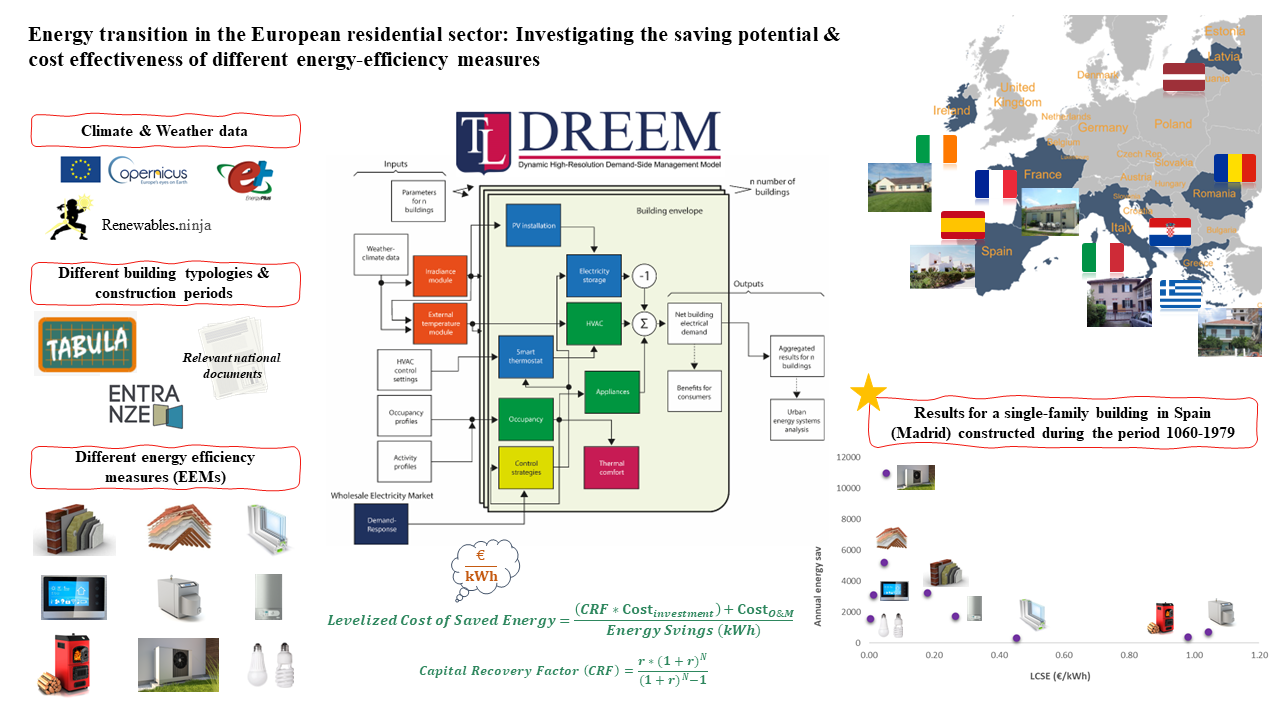
The energy consumption of the residential built environment varies substantially across European Union’s member states depending on the availability of heating fuels, government policies, and the different climatic conditions that have a major influence on heating and cooling demand. As a result, the energy saving potential of energy efficiency measures (EEMs) differs among Member States and country-specific evaluations are necessary to develop effective renovation packages.
The diversity of the residential building stock requires tailored renovation strategies that consider aspects such as climatic conditions, energy uses, and, ultimately, the age of the building stock itself across Europe. Additionally, deep energy retrofit measures in buildings require very high initial investment costs and their benefits only accrue slowly over time. It is, therefore, crucial to identify retrofit measures that are not only beneficial for the environment but will also incentivise building owners and will ensure effective private and public budget spending
In this context, we explored the two following Research Questions (RQs):
RQ1: Which EEMs have the highest potential to reduce energy consumption and, thus, to contribute to higher energy savings in the European residential building sector?
RQ2: How is the energy saving potential and the cost-effectiveness of different EEMs affected by different geographical contexts and construction periods/building typologies around Europe?
Using the Dynamic high-Resolution dEmand-sidE Management (DREEM) model we explored the energy saving potential and cost-effectiveness of 9 different EEMs in 8 European countries, focusing on different building typologies, based on their year of construction.
Modelling results showed that the energy saving potential of the EEMs under study is commonly higher for building typologies constructed before 1981 and that the replacement of a traditional diesel heating system with a heat pump system is among the most cost-effective measures for all countries, while also illustrating high energy saving potential. In addition, modelling outcomes also showed that the replacement of a traditional diesel heating system with a more energy efficient diesel boiler is shown to be the least cost-effective measure in most cases, while measures like exterior wall insulation, roof insulation, and double-glazed windows rank low in terms of cost-effectiveness when it comes to building typologies constructed after 1981.
Overall, considering the national context of interest, our modelling results can be used to showcase the most and least cost-effective measures per country informing the development of tailored financial incentives for energy saving actions.
Paper or report: Download DownloadModels used
DREEM
Dynamic, object-oriented, and equation-based high-resolution simulation model
DetailsSENTINEL case study
Case study: Continental – Europe
Europe-wide opportunities and trade-offs with particular reflection on the concerns, needs and demands of stakeholders.
Details